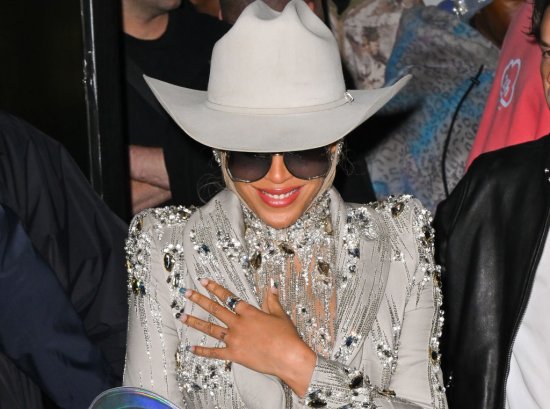
The tracklist for Beyoncé's new album refers to the chitlin circuit
Giddy up! Beyoncé’s new album is out March 29, and the Grammy Award-winning artist released on Instagram what appeared to be a tracklist on March 27 that includes a reference to the chitlin circuit, a network of venues where Black musicians could perform safely between the 1930s and the 1960s.
The heading for the Instagram post is “Cowboy Carter and the Rodeo Chitlin’ Circuit,” and it pays homage to the unsung and pioneering Black performers who came before her, who paved the way for rock ‘n’ roll.
[time-brightcove not-tgx=”true”]Chitlin circuit venues tended to be in areas of the segregated South where Black performers weren’t allowed, but it was anchored by theaters in the Midwest and Northeast with large Black populations like the Apollo in New York City, the Howard in Washington D.C., and the Regal in Chicago. As music journalist Preston Lauterbach described the importance of the network in his book The Chitlin’ Circuit: And the Road to Rock ‘n’ Roll, “It was one of the few places that Black culture could be celebrated.”
The word chitlin refers to a southern dish made of pig intestines. While they’re not a particularly desirable part of the animal, many popular artists performed in spots that served the meal; performers like Blues legend Bobby Rush even claim they got chitlins as payment.
Some of the most desired Black entertainers to grace the chitlin circuit include Ray Charles, Duke Ellington, Ella Fitzgerald, Billie Holiday, B.B. King, Aretha Franklin, Little Richard, the Jackson 5, and Tina Turner.
“The Chitlin’ Circuit was African-Americans making something beautiful out of something ugly,” Lauterbach told NPR in 2014, “whether it’s making cuisine out of hog intestines or making world-class entertainment despite being excluded from all of the world-class venues, all of the fancy white clubs and all the first-rate white theaters.”
Urban renewal projects of the 1960s and 1970s demolished many landmarks in Black communities, including stops on the chitlin circuit. A 1970 TIME magazine article also pointed out that increased television viewership “helped kill off the so-called “Chitlin’ Circuit” of black variety houses.” But Beyoncé’s callback to the chitlin circuit will ensure that this history will not be forgotten.